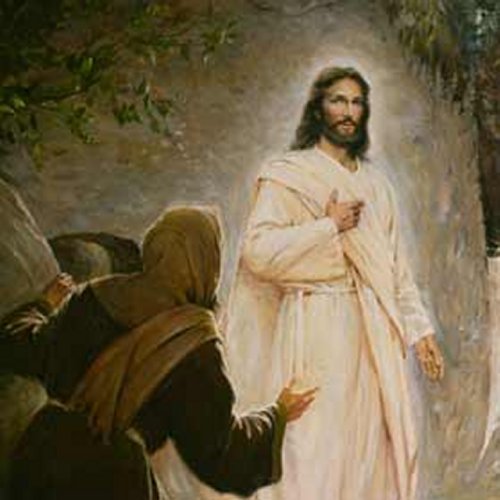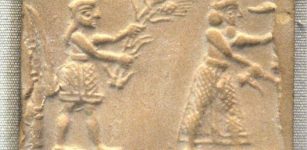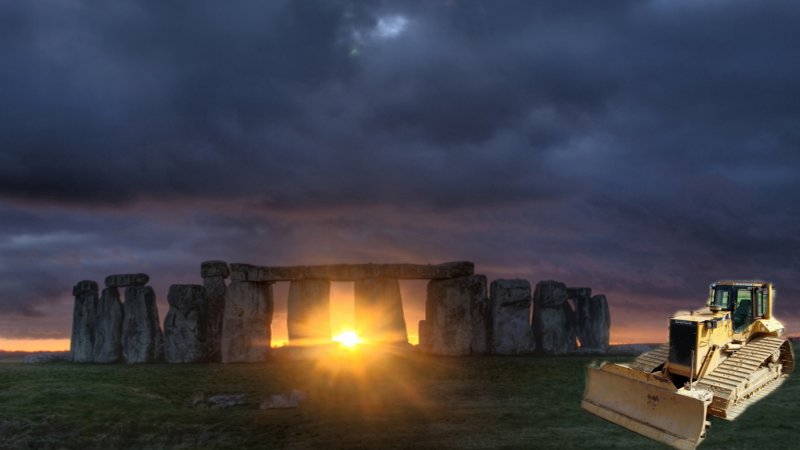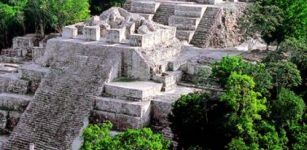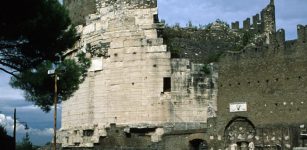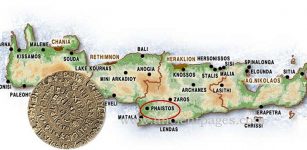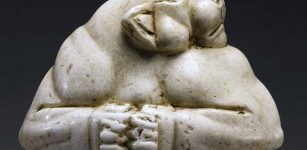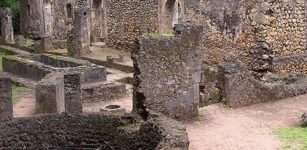10 Mysterious Ancient Manuscripts With Hidden Secrets
MessageToEagle.com – Many mysterious ancient manuscripts with hidden secrets have been discovered over the years. Sometimes, researchers examining ancient manuscripts have found hidden text or ghostly faces. On other occasions old documents related stories of enigmatic, unknown places or incredible events that took place in the distant past.
In this top list we examine 10 mysterious ancient manuscripts that contain remarkable secrets.
1. Secrets Of The Bible: Codex Zacynthius Contains Hidden Text In New Testament
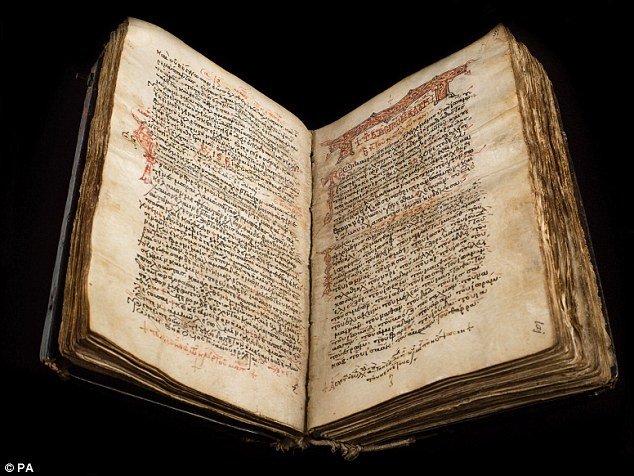
Codex Zacynthius, an old manuscript in the New Testament contains hidden text. The text is a sixth or seventh century script which has been partially scraped away and written over to make way for a 13th century entry. The place of production of Codex Zacynthius is unknown, but it takes its name from the Greek island of Zakynthos, also known as Zante, where it was discovered.
The script was presented to the Bible Society in 1821 by General Colin Macaulay, as a gift from Prince Comuto of Zakynthos. It is the oldest extant New Testament manuscript with a commentary alongside the text, making it a witness to both the development and interpretation of St Luke’s Gospel. Read more
2. Secrets Of Ark Of The Covenant Revealed In Ancient Manuscript
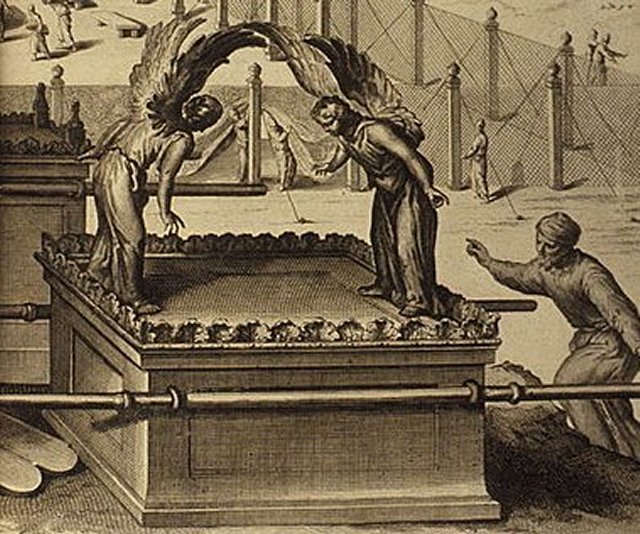
According to James Davila, a professor at the University of St. Andrews, a translated text, called “Treatise of the Vessels” contains information about the location of the legendary Ark of the Covenant. According to the Bible, the Ark holds the Ten Commandments handed down to Moses by God.
The Ark was housed in King Solomon’s Temple, which contained a variety of different treasures. When King Solomon’s Temple was captured and destroyed by the Babylonians in 597 and 586 B.C., the artifacts vanished forever. Since then the fate of Ark of Covenant has been a mystery.
Scientists and Biblical scholars have speculated for years where the Ark of Covenant was located and what ultimately happened to the treasures.
Has the mystery finally been solved or have we found just another piece that fit the puzzle?
Professor James Davila suggests the artifacts from King Solomon’s temple were placed in various places throughout the Middle East.
“Some of these (treasures) were hidden in various locations in the Land of Israel and in Babylonia, while others were delivered into the hands of the angels Shamshiel, Michael, Gabriel and perhaps Sariel,” Davila said. Based on his interpretations of the “Treatise of the Vessels”, Davila thinks that the search for the artifacts from the King Solomon’s temple should be focused on the Middle East where the treasures have been hidden. Read more
3. Ancient Manuscripts Of Mythical City Of Timbuktu
Centuries ago, Timbuktu – sometimes called the city of 333 saints – was most famous as a center of scholarship.
The city was once home to nearly 100,000 ancient manuscripts, some dating back to the 12th century, preserved in family homes and private libraries.
From the early 14th to late 16th centuries Timbuktu was famous for its wealth. It grew rich, between the gold mines to the south and the salt mines in the Sahara.
In the 14th century two-thirds of the world’s gold came from West Africa, a large proportion of it passing through Timbuktu, where it was transferred from the river to trans-Saharan caravans, from canoe to camel.
However, Timbuktu is first of all related to books, ancient manuscripts, priceless intellectual heritage representing literary remnants from Timbuktu’s flourishing fifteenth century. Timbuktu was a thriving center of learning, and manuscripts were highly prized.
It is estimated there are 700,000 manuscripts in Timbuktu, but most of them are missing. They most probably still exist but it is difficult to find them. The manuscripts of Timbuktu are a living testimony of the highly advanced and refined civilization in Sub-Saharan Africa. Read more
4. Medieval Manuscript Reveals Surprising Discovery Of Star Wars Master Yoda & Shocking Monsters
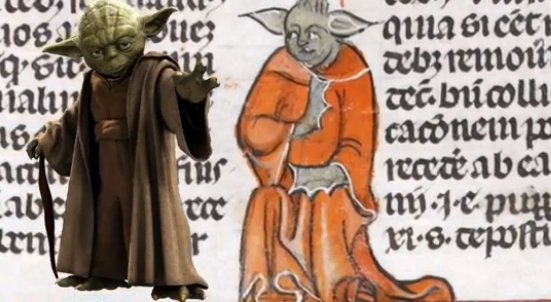
What is Star Wars Master Yoda doing in an ancient medieval manuscript?
If you’re a Star War fan, then you are familiar with The Jedi Master Yoda, the best-known member of a Force-sensitive species whose true name is not recorded. It is a funny coincidence that a Yoda-like figure also appears in a 14th-century manuscript known as the Smithfield Decretals that are collections of papal letters that compiled decisions (decrees) on church law and doctrine.
In their picture book published by the British Library, Medieval Monsters, medieval historian Damien Kempf and art historian Maria L. Gilbert explore the fantastic, grotesque and exuberant world of monsters in the Middle Ages through the images found in illuminated manuscripts, from dragons and demons to Yoda and hybrid creatures. Read more
5. Medieval Manuscripts Contain Hidden Text Of Euripides
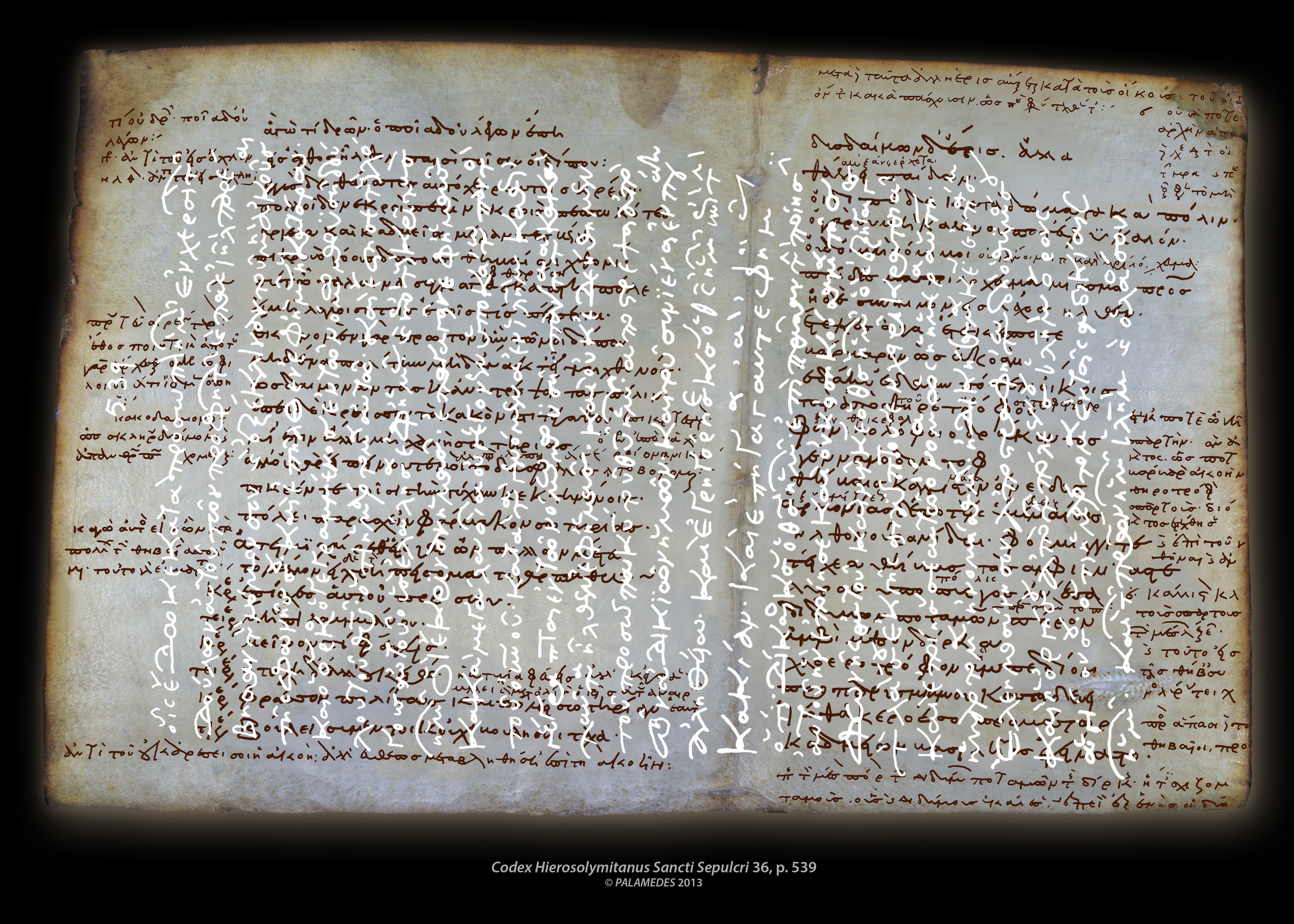
Manuscripts from medieval times, located at the library of the Greek Orthodox Patriarchate in Jerusalem and at the National Library of France in Paris contain invisible text written by by Euripides (c. 480 – 406 BC), a 5th-century BC Greek tragic poet and Aristotle (384 BCE – 322 BCE), a Greek philosopher, as well as a previously unknown ancient commentary on Aristotle.
The hidden texts were repeatedly washed off and overwritten in medieval times.
Using very sophisticated multispectral imaging methods, scientists have been able to decipher up to three text layers in the manuscripts, which were superimposed on each other.
The manuscript in Jerusalem originates from the famous Library of the Holy Sepulchre at Jerusalem. Read more
6. Ancient Manuscript Reveal Jesus Was Married And Fathered Two Children With Mary Magdalene
Theologians have long speculated about Jesus’ alleged romantic relationship with the famed prostitute Mary Magdalene.
The translated text might possibly be the first, real evidence of Jesus as a father and Mary Magdalene’s husband.
See also:
10 Reconstructions Of Ancient Cities, Monuments And Sacred Sites
10 Mysterious Undeciphered Ancient Scripts, Tablets, Codes And Maps
10 Magnificent Ancient Libraries
It can also challenge what is believed about the life of Jesus Christ, one of the best known and most talked-about people of human history.
According to Professor Barrie Wilson and writer Simcha Jacobovic who examined an ancient manuscript almost 1,500 years old found at the British Library.Jesus married the prostitute Mary Magdalene and had children.
The so-called “Lost Gospel”, which has been translated from Aramaic, allegedly reveals the startling new allegations. Professor Barrie Wilson and writer Simcha Jacobovic spent months translating the text, which they claim states Jesus had two children and the original Virgin Mary was Jesus’ wife and not his mother. Read more
7. Voynich Manuscript: An Ancient Book No-Body Can Read
The nature and origin of the manuscript have long remained a mystery. Over the years, the Voynich manuscript has caused a lot of controversy and debate. This ancient medieval text is a cryptic document written by an unknown author.
Many skilled cryptographers have studied the document. Their attempts to break the code failed. Up to now, none of them has been able to crack the code.
It is worth mentioning that at the end of WWII the U.S. military passed some spare time encrypting ancient texts. They managed to decipher every text except the Voynich manuscript.
Does the Voynich manuscript really contain a message? Are we unable to break the mysterious code? Is the book a deliberate hoax? Is it an encoded version of a known language or a totally invented language?
While the text written on medieval parchment – using an unknown script system – shows basic statistical patterns that bear resemblance to those from real languages, there are features that suggested to some researches that the manuscript was a forgery intended as a hoax,” researchers explain in their paper.
The manuscript was named after Wilfrid M. Voynich, a Polish-American book dealer who found this manuscript in a chest in the Jesuit College at the Villa Mondragone, in Frascati in 1912.
The Voynich manuscript is just a big baffling mystery. Read more
8. The Sibiu Manuscript Describes Middle Ages’ Great Event – Rocket Launch Into Space
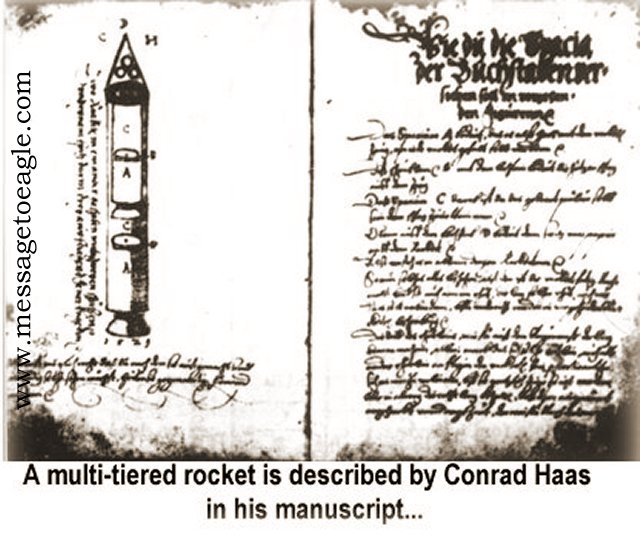
In 1961, Doru Todericiu, Professor of Science and Technology at the University of Bucharest, stumbled upon an ancient document, the so-called Sibiu Manuscript.
The 450-page manuscript, bound into a large, single volume dated to about 1570 has history that goes back several centuries. It deals with technical data regarding a multi-stage rockets, artillery and ballistics.
The discovery has been lost in the mists of time, because historians have never referred to this invention being of such a great importance for early aviation.
The third part of “The Sibiu Manuscript” contains a detailed report of a “flying javelin” with a considerable effective range and the launching of a multi-tiered rocket, in the city of Sibiu, where thousands of people witnessed the event that ended up in a complete success in 1555. Read more
9. 13th Century Black Book Of Carmarthen Contains Ghostly Faces
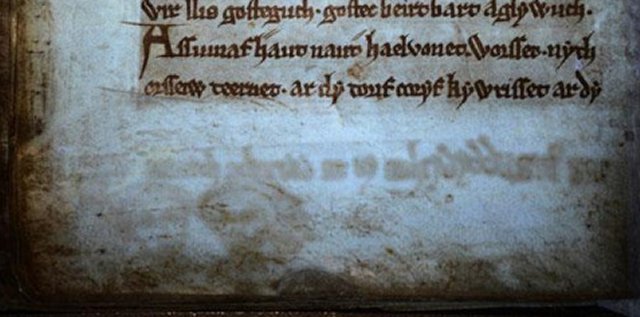
One of the UK’s most important medieval manuscripts, the Black Book Of Carmarthen is surprisingly revealing ghosts from the past after research and imaging work discovered eerie faces and lines of verse which had previously been erased from history, according to a new research.
The two spooky faces hidden to the naked eye for centuries were found by scholars using ultraviolet light in the 750-year-old Black Book of Carmarthen – which contains some of the earliest written references to King Arthur and Merlin.
The spine-chilling find jumped out from the pages under the UV light in the pages of the ancient book kept securely at the National Library of Wales. The Black Book of Carmarthen was written by a single monk around 1250 and is the oldest surviving manuscript written solely in Welsh. King Arthur makes one of his first appearances in literature as a ruler wanting to gain entrance to a royal court by singing the virtues of his men. Myrddin, better known in English as Merlin, appears in two other poems in dialogue with a Welsh poet.
The ink-drawn faces date to 14th or 15th century and alongside them is an inscription that suggests the passing down of the book from one generation to another.
As researchers shone a UV light over the 54 animal skin pages and discovered a whole host of doodles, drawings and poems hidden into the margins. Read more
10. Codex Washingtonianus Contains A Passage Not Seen In Any Other Biblical Manuscript
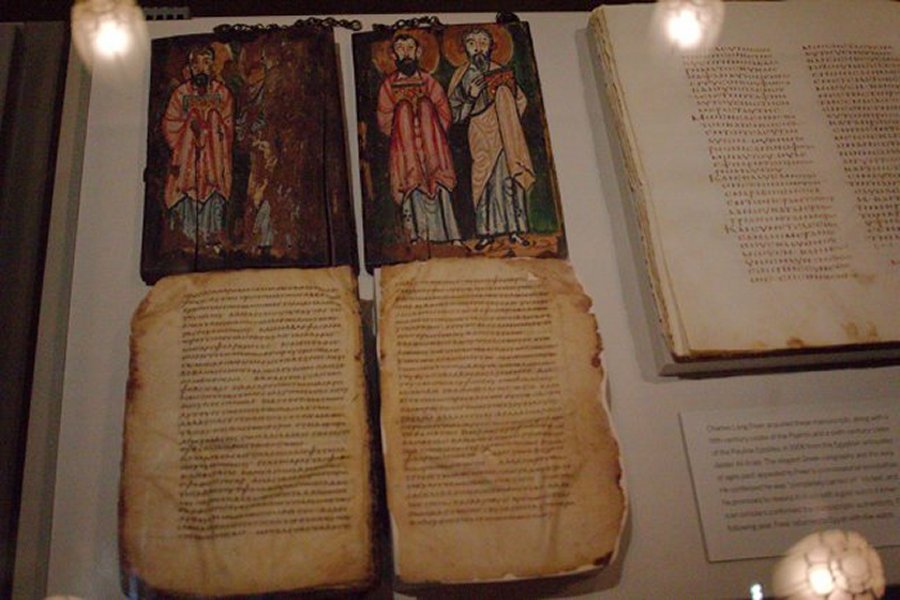
Located at the Smithsonian’s Freer Gallery of Art, the Codex Washingtonianus is the world’s third oldest Bible. It consists of the four Gospels in the so-called Western order (Matthew, John, Luke, and Mark, as Dea). This priceless ancient book is heavily guarded and it rarely makes public appearances. The Bible has a painted wooden cover, with almost 200 parchment pages, and is reportedly more than 1,500-years-old.
When the Codex Washingtonianus was first published publicly in 1912, it caused a controversy because it contained an extra passage in the Gospel of Mark.
“While researching their cultural context and physical structure, it was discovered that the Washington Codex contains a passage not found in any other biblical text – a segment at the end of the Gospel of Mark known as the Freer logion (a logion is a saying attributed to Jesus)
A translation of the Freer logion reads: “And Christ replied to them, ‘The term of years of Satan’s power has been fulfilled, but other terrible things draw near.’”
That passage seemed to address the question of whether God or Satan was in charge. Read more
Copyright © MessageToEagle.com All rights reserved. This material may not be published, broadcast, rewritten or redistributed in whole or part without the express written permission of MessageToEagle.com


